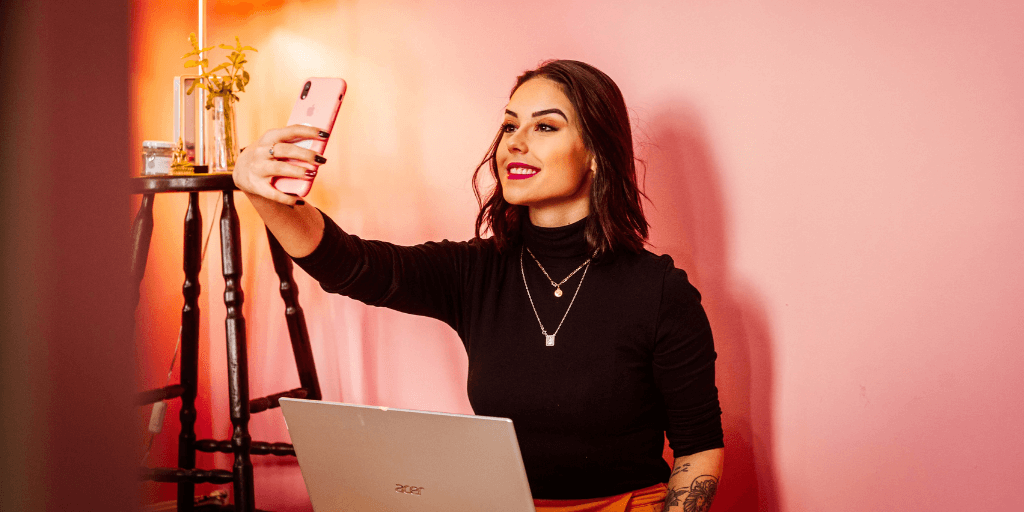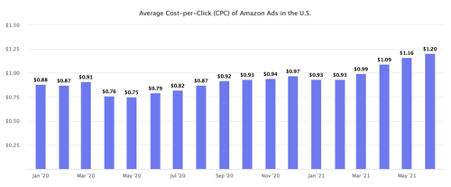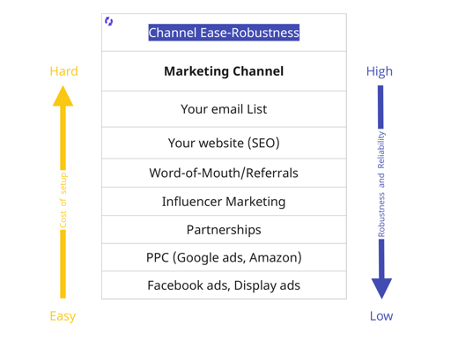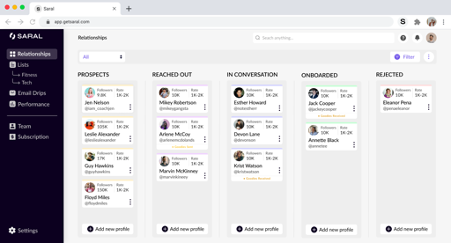Why Creators on Social Media May Be the Only Solution to Rising Facebook & Amazon Ad Costs

The cost per click (CPC) for Amazon sponsored ads has been going up, not steadily, but exponentially from 2020 onwards. It’s only going to get worse.
If you also sell independently through your website, you know that it’s the same with Facebook ad costs. The ads eat up all your margin and you’re left with less than what you wanted.
In June of 2021, Marketplace Pulse published this report which showed CPCs are up by 50% from 2020. As you know, the situation is much worse this year.

BigTech makes it hard to run a business sustainably. Apple rolls out a privacy update and your Facebook ads performance tanks, Amazon’s CPC and ACoS keep going up while your CTR and conversion rates are the same (or worse) due to increased competition. Let’s not even get into the issues supply chain disruptions are causing.
The point is, that it’s super hard right now to be a merchant selling products on Amazon or online.
While you can’t control supply chain issues or BigTech’s whimsical policy changes, you can control one thing. And that is your choice of marketing channel.
The fundamental flaw with advertising on Amazon or Facebook
We get it. Ads are easy. You can just turn them on and they’ll start driving eyeballs to your product almost instantly. But, what is easy is not always the most sustainable. It isn’t always the most profitable. Ads are a good way to start and get some momentum but if you want to build a business that sustains over the long run, you need to grow profitably. To do that, you must reduce your dependency on third-party platforms that do not have your best interest in mind.
Fundamentally, there are only 3 types of marketing channels.
Owned
Owned channels are the channels that you fully control, like your email list. This is the best type of marketing channel as it’s permission-based and you have total control over what you do with it. They have zero susceptibility to performance drops due to algorithm updates and are the most robust.
Earned
Earned channels are those that you have some control over but you don’t own them completely. These are also essential. For example, your partnerships and word-of-mouth. You have to earn them (hence the name).
Rented
Rented channels are rented from others. Like Amazon ads or Facebook ads. You have no control over what happens to them and a third-party can completely kill your performance, as we’ve seen over the last couple of years. These are the worst types of channels to rely on.
The problem with marketing is that there’s an inverse relationship between ease of setup and long-term reliability. That is, the worst type of channel is the easiest to set up. And the best type of channels take more time and resources to set up.
You can’t get a partnership going in 30 minutes, but you can start running an ad on Amazon. This is the instant gratification trap you must move away from to build a sustainable business, now more than ever.

This is the fundamental flaw in only using advertising for growth. You spend a lot and you build nothing reliable in the long run. You want to build a business that works even when you don’t work in it. You want a marketing channel that works without you having to tweak things every day and without falling prey to policy changes and arbitrary decisions by the Big Tech ad mafia.
So what’s the solution? What’s the golden goose, you ask? It’s been around for a long time and it will be around forever – marketing through influence, or influencer marketing.
Why it’s about time you try influencer marketing
Most people think this is a new fad. But it isn’t. It is arguably the oldest marketing channel in existence. People buy through people, not ads. Are you more likely to buy a product that a friend recommends to you personally or when you see a 30 second flashy ad about it?
Influencer marketing simply takes this principle and puts it on steroids for you. People today live parasocial lives with creators online, especially after the lockdowns. They trust online creators more than they’d trust their colleagues at work! Isn’t that a great opportunity for you to leverage?
Influencer marketing has been here for as long as commerce is being done, and it will be here long after Facebook ads die out. Do you want your brand to thrive regardless of how ad platforms perform? Our guess is yes! Right now, the best way to do that is to start running influencer programs.
DTC brands and SaaS companies already leverage influencers to grow. There is no reason for Amazon merchants to not do the same thing.
Return on Investment
If you’re suffering from decade-low levels of ROAS on Facebook and all-time high levels of ACoS on Amazon, this will be (much needed) music to your ears!
Many studies like this one show that influencer marketing has a 3x-6x ROI than ad spend. One-off experiments even show 11x ROI, but let’s talk averages for now.
How does a 4x return on ad spend sound? $1 in, $4 out.
It’s like the golden days on Facebook ads in 2015. And it’s about time you capitalize.
How to start doing Influencer Marketing
At this point, the only thing stopping you is the know-how of running influencer campaigns. You may not have done it before. So we’ll break it down into a simple 6-step process that you can follow.
1. Prospecting
Your first step is to align on a few important keywords and hashtags related to your product. These will help you search social media for creators who create content with those hashtags.
Focus on micro influencers, these are creators with < 50k followers. Pick one platform to start, we recommend Instagram.
You can find emails on Instagram’s mobile app, but it’s a bit cumbersome. You can hire freelancers to do it, or use tools like Saral to find the most up-to-date email and contact info.
Action item: Make a list of 100 potential ambassadors for your brand.
2. Outreach
The best way is to simply email all of them. Use mail merge tools or email tools like Quickmail to do this. Make sure you add a custom line to each email. Being specific in your early outreach is key. Convey why you want to work with them, mention one of their latest posts, and don’t ask for a post about your brand in the first email. Here are some useful templates.
Keep the call-to-action “soft”. No hard asks or selling. Just see if they’re open to collaborating and strike a conversation.
Action item: Reach out to them via email. Leave comments on their posts.
3. Dealmaking
Offer an affiliate deal to start based on your margins. 10%-20% of every sale made is what brands usually do.
Once they reply, it’s your job to send them more details. There are two ways this can go.
- They ask for an upfront fee (chances are lower since you’re targeting micro-influencers).
- They want to work with an affiliate deal.
Have a bias for working with creators who are okay with doing affiliate deals. They’re likely to be true lovers of your brand and there’s no risk for you.
Action item: Get influencer partners onboard as affiliates.
4. Shipping
You will need to ship them the product so they can either try it first (sometimes before they say yes) so they can create content around it.
Write a custom note. Do your best to make their unboxing experience great! Your unboxing experience has a 100% open rate, make sure you use it in your favor.
Track this and follow up with them a day after they receive the package.
Action item: Send them products!
5. Performance Tracking
You can use UTM codes to track off Amazon.
On Amazon, you can onboard your influencer partners onto the associates program and track every sale they generate from there.
Calculate your ROI once everyone is done posting about your brand.
Action item: Measure ROI, find what type of influencers work best for you.
6. Relationship Management
Keep in touch with your affiliates, so many brands don’t do it and it’s the easiest way to stand out. Comment and like on their posts which aren’t related to your brand. Support them in any other way you can.
There’s no reason they only have to post about you once. Once they send you some sales, reach out once again and strike an ongoing partnership where you keep sending them free products and they keep posting about you. Transactional deals only take you halfway there, you will truly realize the potential of influencer marketing when you build real relationships with creators.
Action item: Build long-lasting relationships!
Summary
We covered why advertising using paid media is a terrible channel for your business to rely on. Then we understood what the best alternative is, that is influencer marketing. And finally, we showed you a simple 6-step process on how to actually get started with it.
Save this blogpost in your archive and send it to your team. It is time for you to diversify into more profitable channels for growth.PS: You can use tools like Saral to find influencer emails, save them to your roster, send email drips, and manage all your relationships in one place. Check it out!
